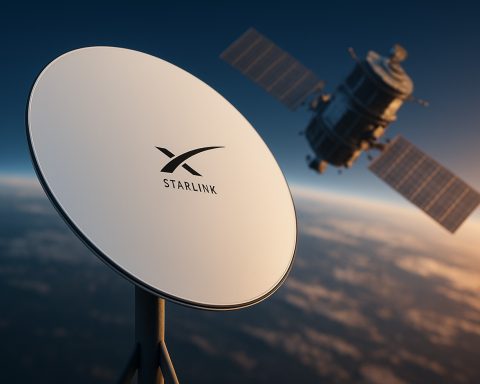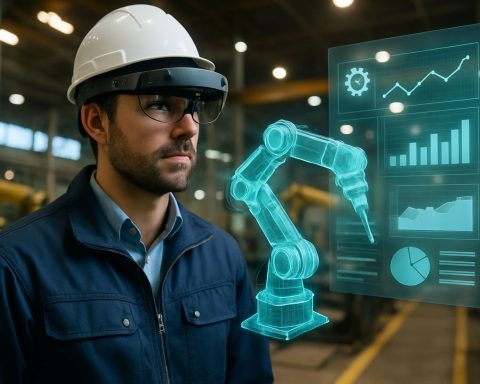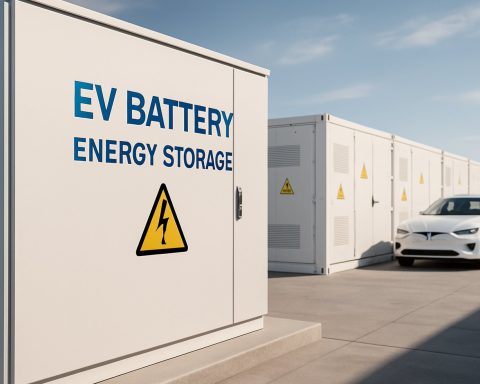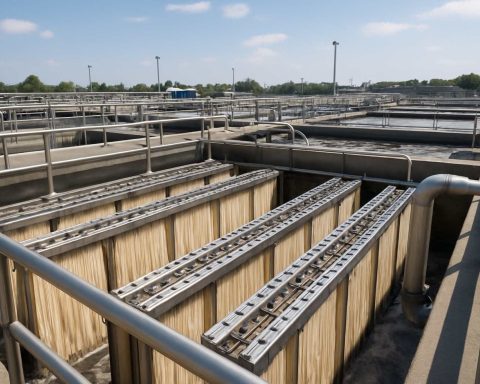Amidst evolving energy demands and climate challenges, the concept of microreactors is emerging as a potential game-changer in the nuclear energy landscape. Unlike traditional large-scale nuclear plants, microreactors are compact and can generate up to 10 megawatts of electricity. They are designed to be versatile, offering reliable energy solutions in remote areas, military bases, or disaster-stricken regions.
Pioneering technology firms are spearheading efforts to commercialize these small-scale reactors, which boast advanced safety features such as passive cooling systems, reducing the risk of overheating. Additionally, their modular design allows for quicker installation and flexibility in power management. With the capacity to operate for years without refueling, microreactors promise to be a sustainable solution to meet the energy needs of the future.
Coupled with advancements in nuclear fuel and waste recycling, microreactors are set to significantly reduce carbon emissions, a critical step in combating climate change. Moreover, their minimal space requirements make them ideal for urban environments or areas with limited infrastructure.
However, challenges remain in terms of regulatory approvals and public perception. Transparency, robust safety protocols, and community engagement will be critical as these technologies move from conception to reality.
As the world pivots towards greener energy sources, microreactors present a new frontier in nuclear energy. Their development may catalyze an era of decentralized power generation, providing a powerful tool in the global shift towards a sustainable future.
Microreactors: A Catalyst for a Sustainable Energy Future
As the global community faces the dual challenges of burgeoning energy demands and climate change, innovative solutions are imperative to navigate this complex landscape. One such solution gaining momentum is the deployment of microreactors, an emerging technology poised to transform the nuclear energy sector. These compact powerhouses, capable of generating up to 10 megawatts of electricity, offer substantial potential for supplying energy to remote areas, disaster-stricken regions, and even urban settings with limited infrastructure.
The impact of microreactors on the environment is particularly promising. Their ability to produce significant amounts of electricity with minimal carbon emissions makes them a potent tool in the fight against climate change. By providing a cleaner alternative to fossil fuels, microreactors can play a pivotal role in reducing the carbon footprint of power generation. This shift is crucial as global efforts intensify to limit temperature increases and the associated impacts of climate change, such as rising sea levels, extreme weather events, and biodiversity loss.
Moreover, microreactors’ advanced safety features and efficient use of nuclear fuel enhance their appeal. With passive cooling systems, these reactors significantly reduce the risk of overheating, addressing one of the most significant concerns associated with nuclear power. Additionally, the potential for nuclear fuel advancements and waste recycling could further mitigate the environmental impact, turning a longstanding challenge into a sustainable loop of energy production and consumption.
The societal implications of microreactors extend beyond environmental benefits. By enabling decentralized power generation, these reactors could democratize energy access, especially for communities that currently lack stable electricity supply. This accessibility could lead to improved healthcare, education, and economic opportunities in underdeveloped regions, fostering more equitable growth globally.
Economically, the widespread adoption of microreactors could catalyze new industries around their manufacture, maintenance, and operation, generating job opportunities and stimulating innovation. As companies strive to commercialize these technologies, there is potential for significant shifts in the energy market. The flexibility of microreactors allows for faster deployment compared to traditional plants, offering a quicker return on investment and aiding in the transition to renewable energy sources.
However, integrating microreactors into the mainstream energy grid is not without challenges. Regulatory frameworks need to evolve to accommodate these small-scale reactors, ensuring that safety remains paramount without stifling innovation. Public perception is another critical hurdle; ensuring transparency and fostering community engagement will be vital in gaining public trust and acceptance.
Looking to the future, microreactors symbolize an important step towards a more sustainable and resilient energy system. Their development could herald a new era in which power is cleaner, more equitably distributed, and less centralized, ultimately contributing to a more sustainable future for humanity. As the world continues to grapple with energy and environmental challenges, microreactors present an innovative solution that aligns with the need for immediate and impactful change.
The Future of Energy: Microreactors Leading the Way
Introduction to Microreactors
In the midst of navigating the intricate dynamics of modern energy demands and climate shifts, microreactors stand as promising innovators in the nuclear energy sector. Unlike their hefty predecessors, these compact powerhouses are geared to produce up to 10 megawatts of electricity, rendering them not only versatile but also particularly effective in scenarios at remote locations, military installations, or within disaster-hit areas.
Innovative Features and Technological Advancements
Microreactors are at the forefront of nuclear advancements, thanks to the efforts of pioneering technology firms. Their sophisticated passive cooling systems significantly mitigate overheating risks, a notable safety enhancement over traditional methods. The modular architecture of these reactors facilitates expedited deployment and power management adaptability. Astonishingly, they can function for years without requiring refueling, making them an ideal component in the sustainable energy matrix of the future.
Environmental Impact and Sustainability
Significant strides in nuclear fuel technology and waste recycling accompany the microreactor revolution, marking a meaningful reduction in carbon emissions—essential for addressing climate change. Their compact form factor is particularly advantageous in urban and infrastructure-challenged environments, offering a feasible solution where space is at a premium.
Regulatory and Public Perception Challenges
Despite the appealing prospects of microreactors, challenges persist, notably around regulatory hurdles and public acceptance. Achieving success will necessitate meticulous transparency, strong safety frameworks, and active community dialogue to navigate from experimental designs to real-world applications effectively.
Comparisons and Market Insights
Microreactors are not merely smaller versions but a distinct shift in how we approach nuclear energy. Their size allows for decentralized energy production, contrasting the traditional centralized nuclear power systems and promising a more flexible and responsive energy landscape. This transition could pave the way towards a more sustainable energy future.
Pros and Cons
Pros:
– Compact and versatile, ideal for varied environments
– Long operational life without refueling requirements
– Advanced safety features reduce operational risks
– Supports reduction in carbon emissions
Cons:
– Barriers in obtaining regulatory approval
– Public skepticism and required fostering of trust
– Initial high costs of technology development
Future Predictions and Trends
As the global pursuit of greener energy solutions intensifies, microreactors spearhead a budding era in nuclear energy. Their implementation could spark a wave of decentralized power systems, offering a formidable instrument in the worldwide commitment to a greener future.
Energy Department for more insights into energy innovations and policy updates.









